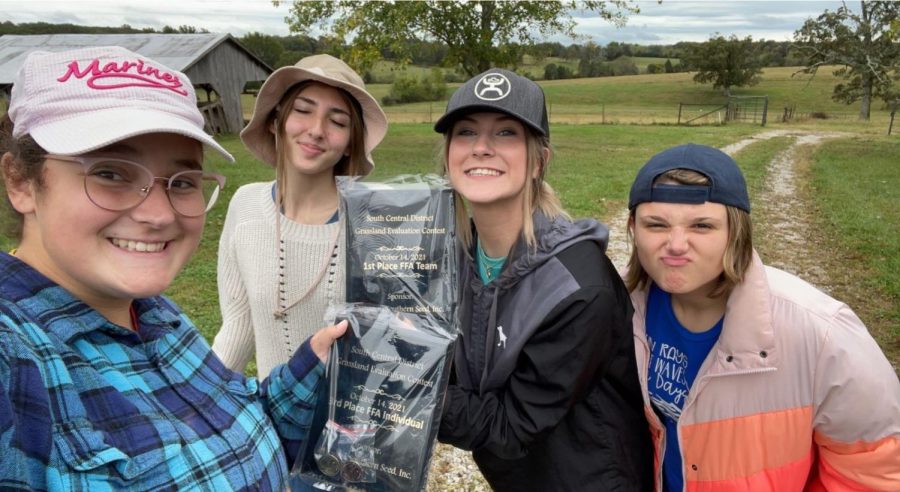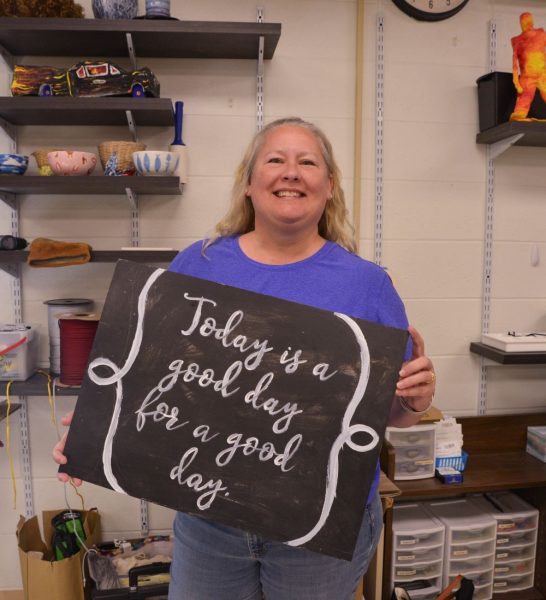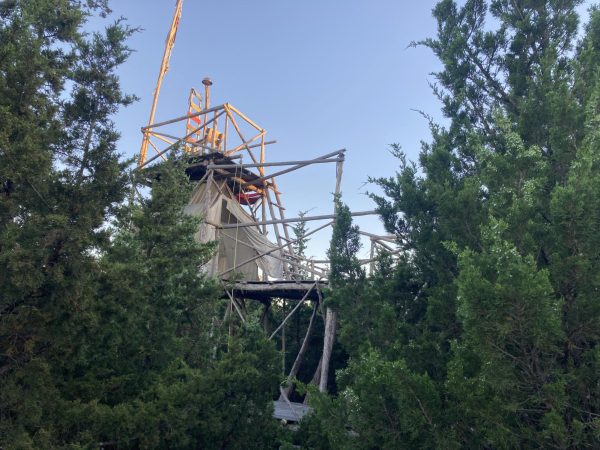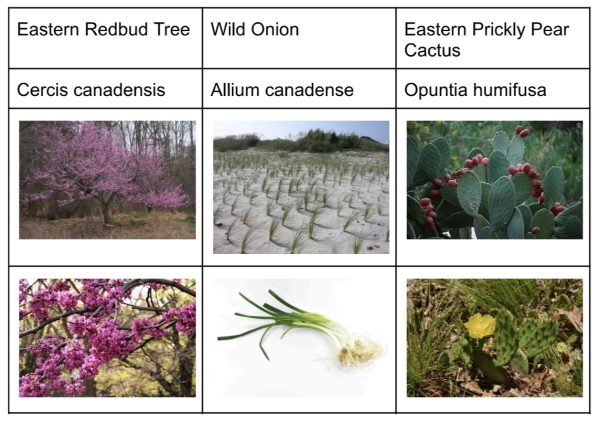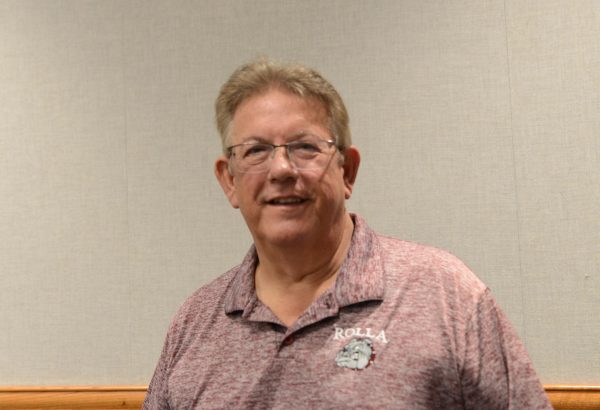Agricultural Education: Pigs, Grass, and Student Success
What is FFA, agricultural education?
Near the end of 8th grade, future freshmen are asked to fill out a brightly colored sheet deciding what classes they will be taking in their first year of high school. Under the practical arts category lies the class Agriculture Science I, often called Ag I. Many students check that box besides the class for a variety of reasons. They could live on a farm, want to be a veterinarian, or they just like plants, but the only requirement to enroll is to have a desire to learn about agriculture.
“Agricultural education means we teach everything from forestry and natural resources and wildlife to production Ag, which includes beef cattle, forage production, and row crop, to Ag construction or Ag mechanics, which would include welding and construction of agricultural products to horticulture and landscaping in our greenhouse where we look at horticulture crops both from a growing standpoint as well as a retail greenhouse,” said Cord Jenkins, the agricultural education instructor at Rolla High School. “Then the landscaping portion of that would be taking those plants and putting them into residential and business landscapes. Law agriculture is huge and covers a large area on the science side, or what I call the hard science side. Then the other thing that we do in Ag education is teach leadership skills. We’re going to do things like public speaking, speech writing and parliamentary procedure. We’ll talk about citizenship, how to properly dress for the occasion, whether that’s a FFA event or a job interview, and resumes. It’s a very wide array of subjects.”
If a student enrolls in Ag I, they are then eligible to join Future Farmers of America (FFA).
“FFA is a student organization that is both intra curricular and extracurricular,” said Jenkins. “What I mean by that is we have portions of FFA that we do in class time and that we have grades on. That’s the intra curricular portion, and then of course FFA has some extra curricular activities, much like another club or organization would at the high school.”
These activities include meetings, competition teams, fundraisers, leadership conferences, and fun social events. FFA members must also complete a supervised agricultural experience (SAE).
A way to compete
For sophomore Lena Stricklin, the SAE is her favorite part of FFA.
“The portion that I find really fun is showing livestock,” said Stricklin. “It’s an SAE portion, which you do to make money, and it shows you responsibility.… With the SAE project, [you can do] anything. There’s some kids that make candles and sell them, or they make cookies and sell them. My project is definitely something bigger. It’s livestock, so we [my family and I] raise show pigs, and we also raise fat hogs to butcher, and I showed them at the Phelps County Fair.”
Showing livestock is a long-term commitment, but to Stricklin it’s her sport.
“You work six months with this animal,” said Stricklin. “…For a pig, there are specific weight limits, so for the first weigh in, they [the pigs] can only be 40 to 100 pounds, and if they’re over or under that they cannot be used… Then you strive to be at least 230 though 280 is perfect weight for pigs… What you do with that animal is you train it, and it trusts you. I practice every day with mine. [I] make sure they look show portion and make sure their weight’s on task… They’re not underweight; they’re not over. They look like the showy type, so their head’s up in the air. They’re not walking too slow, but they’re not walking too fast.”
The person showing the animal must also perform responsibly, and look professional.
“Practicing makes perfect, of course,” said Stricklin. “And so I spend those six months making sure that they’re on task and then once I get to the fair, it’s pretty much four days to have fun… You work hard at home, and at the end of the goal, you get to sell your animal. You take buyer letters out to the public to get them to come to buy your animal. There’s lots of kids that make good money, and there’s some kids that don’t really make good money, but this is their sport. And so of course some people take more initiative than others, and it shows.”
Stricklin started showing pigs as a middle schooler after experiencing injuries in traditional sports.
“I used to do gymnastics, and I played basketball when I was little, but I got hurt,” said Stricklin. “I had something wrong with my knee, and it made me not interested anymore [in those sports]. My grandpa was really big into pigs, and I found an interest in pigs, so we started going to 4-H, which is different than FFA, but it allows you to show when you’re younger, and FFA [is how] you show when you get older. Anyways, I fell in love with pigs. I just had so much fun, so I’ve been showing pigs for about six years. They have a crazy amount of personalities, all with different things. One will be really spunky, and the other one is just kind of gripy.”
Stricklin also experimented with showing other animals, such as heifers, female cows that have not had a calf, and lambs, but pigs are her favorite.
“I wanted to venture out into more different species, so I moved to cattle.” said Stricklin, “After my heifer… stepped on my foot, and broke my foot… I moved to showing a lamb. After I started showing lambs, I fell in love with lambs, so I show a variety of things.”
No matter what animal Stricklin is showing, she strives to be the best.
“My dad, since he was raised on a pig farm, knew the rights and wrongs of how to feed,” said Stricklin. “But as we’ve gradually progressed in the times, we have made better choices on feeding and stuff, and we’ve moved to showing in bigger shows. I always want to win. When I strive to win [something], and I’ve won that, then I have to have a bigger goal. After I had won the county fair, and started winning jackpot shows which are just little one day shows… I wanted another bigger thing and so I went to the State Fair this year… and I won 14 and over 4-H showmanship, so that was a really cool experience.”
Stricklin believes her passion for showing livestock will one day lead her to a career in agriculture.
“I love it,” said Stricklin. “This is my sport. Other kids like a ball sport at school better than this, but this is just my sport, and I definitely want to do something in the agricultural field. After raising and showing livestock, it’s definitely helped me understand how much knowledge, passion, love, and responsibility it takes to be able to do something like this.”
Preparation for a future career
FFA has also helped senior Lucy Baur prepare for her future career.
“I want to study agribusiness and culinary arts,” said Baur. “I want a farm to table restaurant, and I’ll be the chef, farmer, and business owner, so I’ll be an entrepreneur.”
One specific activity that has helped Baur prepare for her career is competing in the grasslands evaluation contest.
“We have contest teams which go and compete against other FFA chapters,” said Baur. “The contest team I usually choose is grasslands. That is where you study grass or forage. There’s a cow problem in it, and that’s where you see how much forage is produced and if it meets the needs of the herd. Then there’s soils. That is basically the study of what kind of soil [the sample] is to see if the forage that’s growing it is good or if something needs to change. There’s also ID, where you identify different types of plants, and wildlife, where you see if the pasture is good for wildlife as well as livestock.”
While Baur’s future career played a role in her decision to compete in grasslands, her grandma also served as an influence.
“I like grasslands because it’s practical for me,” said Baur. “One day, I’ll be a farmer, and I’ll need to know this stuff… It’s also very fun for me because ever since I was little, I’ve been identifying plants with my grandma.”
Baur and her team did well this year.
“In Districts, we got first place, so that was really good,” said Baur. “I got third highest scoring individual, and then at State, we got eighth place. The top five teams go to Nationals, so we were only three away, and since we haven’t done it in two years, and we have two new members that had never done it, I think that’s pretty good.”
All about student success
No matter what part of agriculture a student wants to pursue, ag education is meant to meet that student’s needs and help them succeed.
“Why I do what I do is for student success,” said Jenkins. “Student success looks different with different students. Sometimes it is a student doing very well on a contest team. Sometimes it’s a student doing very well in class…. My philosophy is that my job is to meet my students at their skill levels and take them as far as I can.”

Hey, I’m Mallory, the webmaster of ECHO. This is my second year on staff, and I’m a senior. I run cross country and track, participate in band, stuco,...



